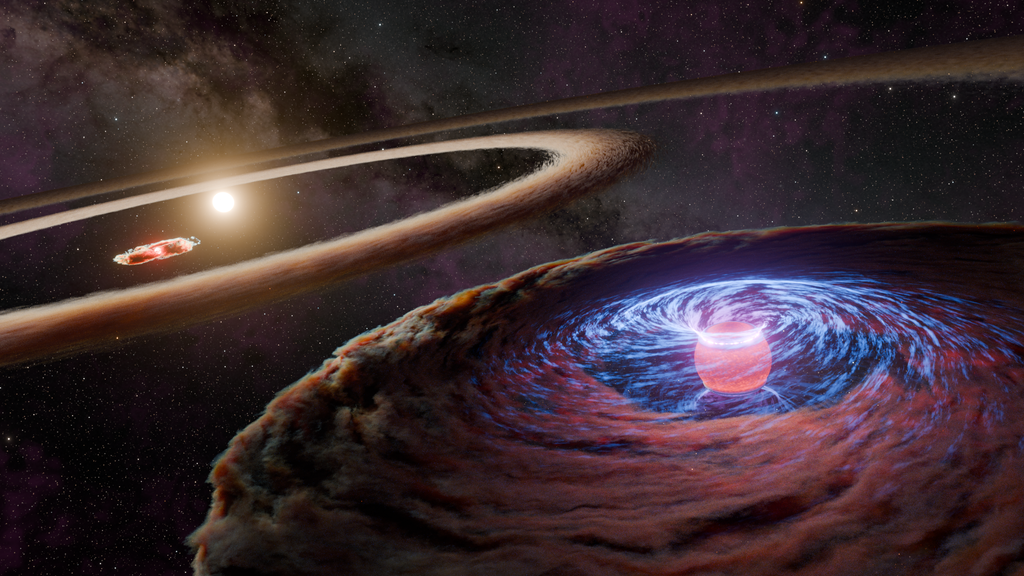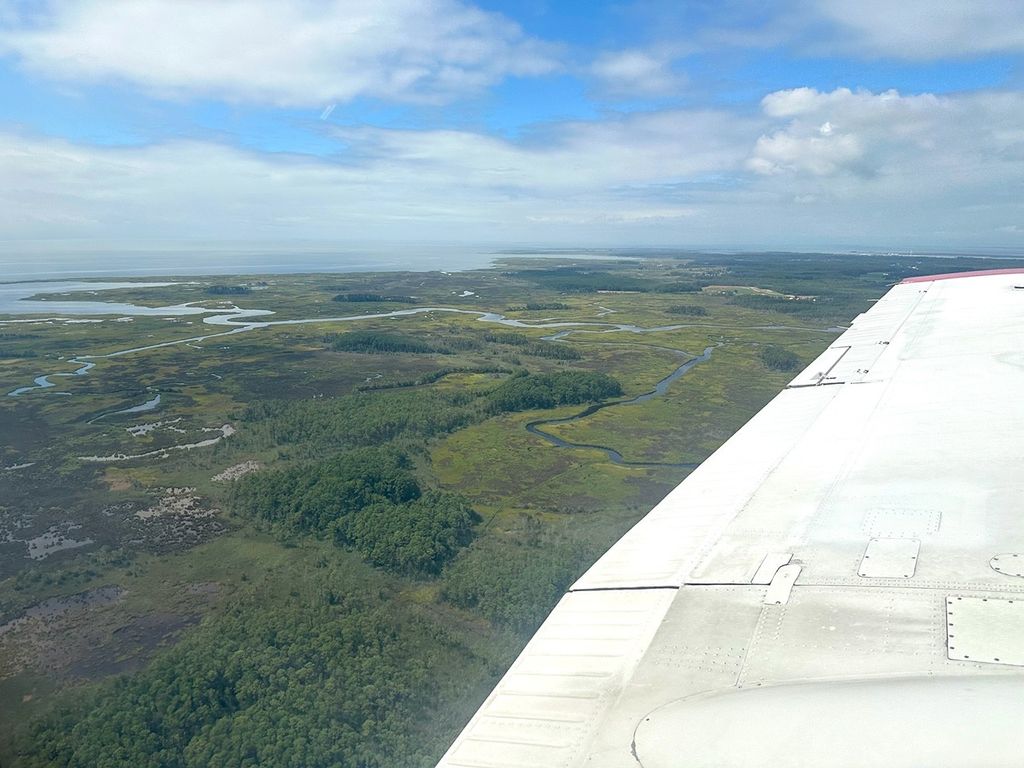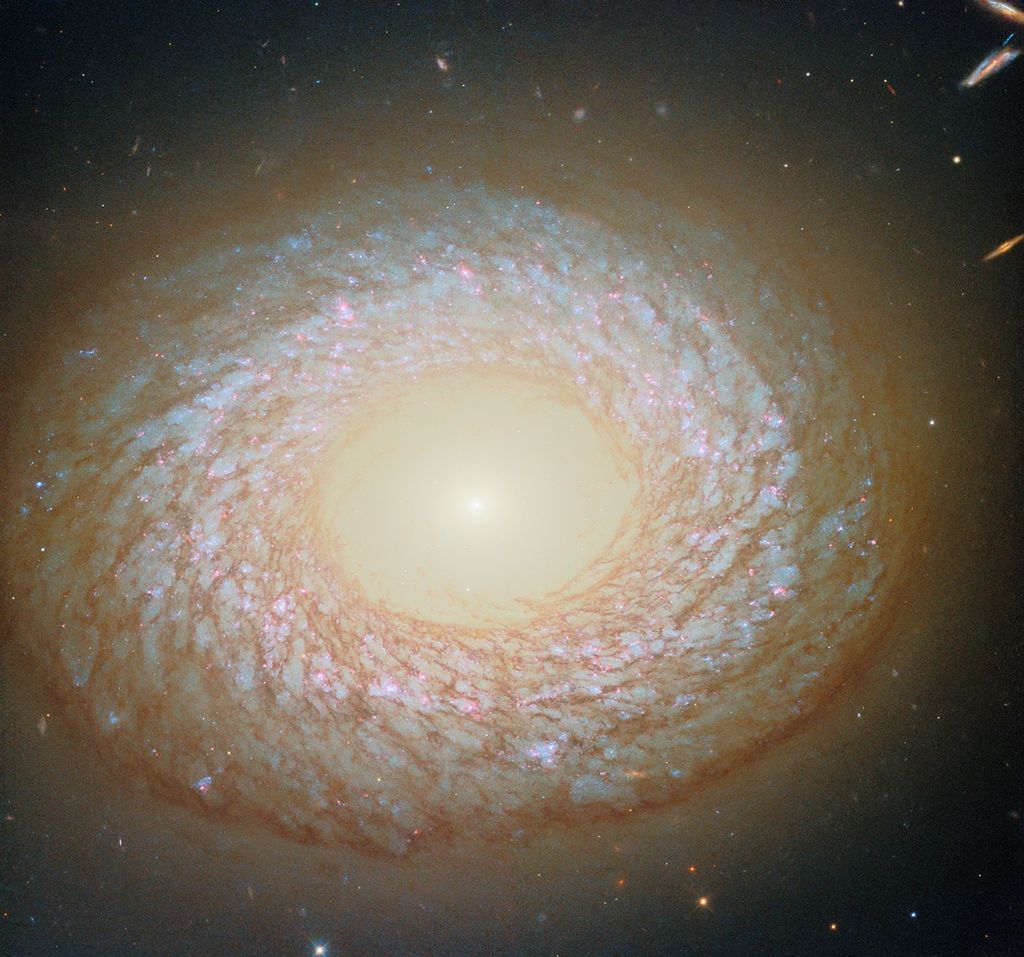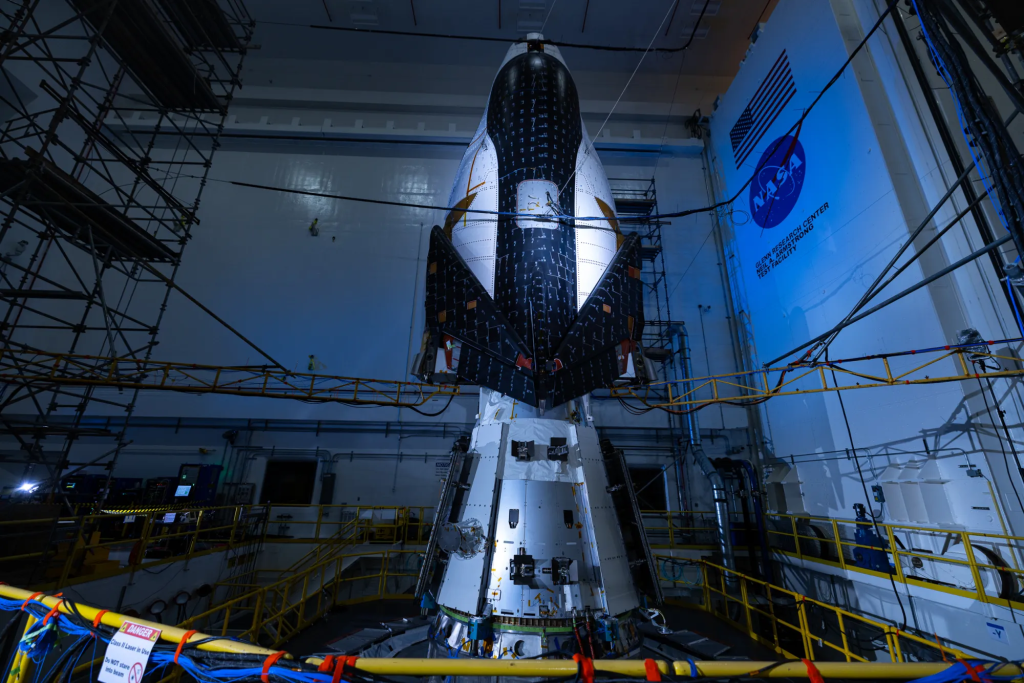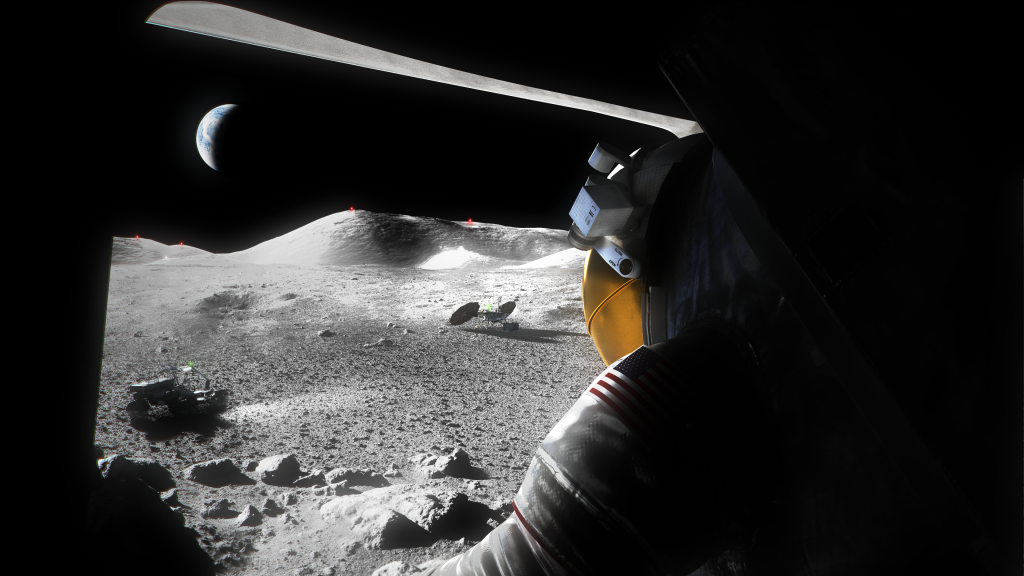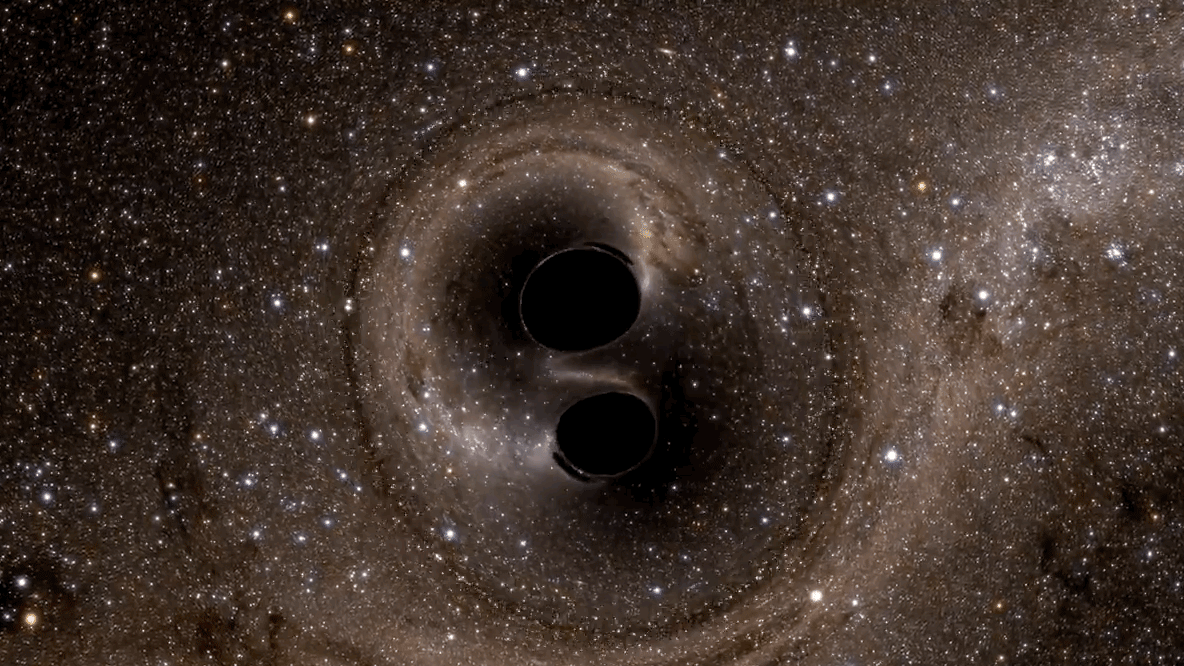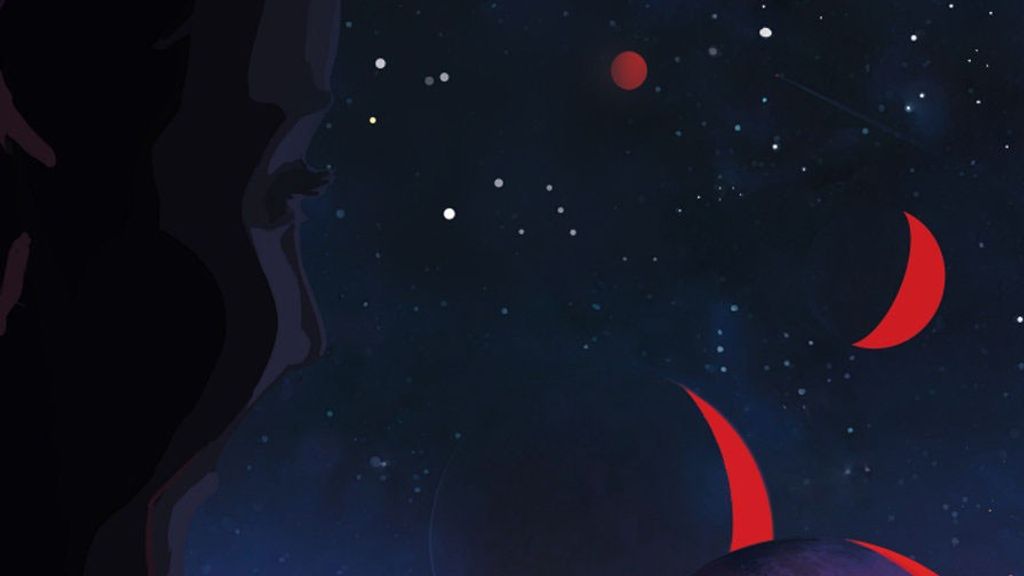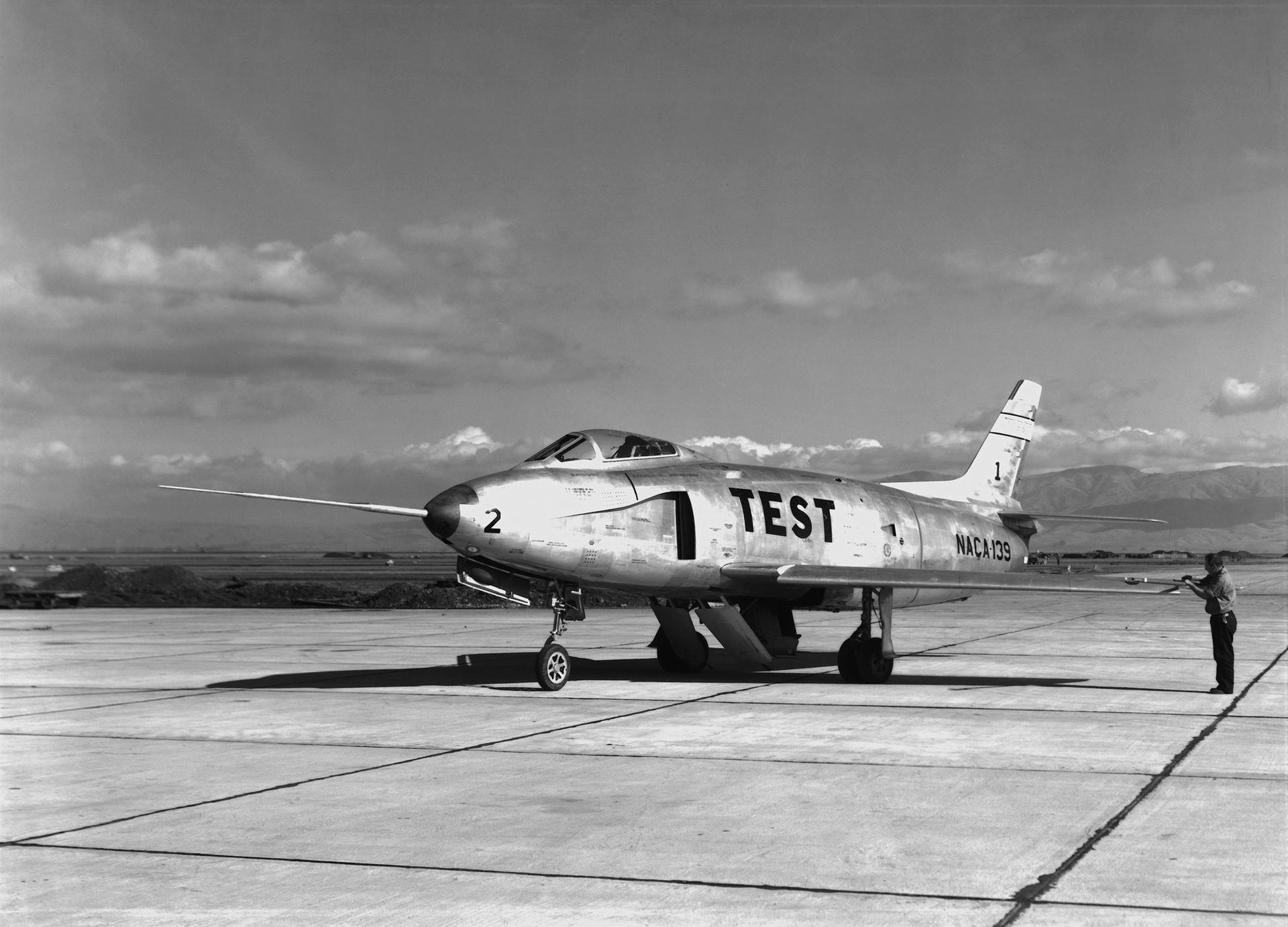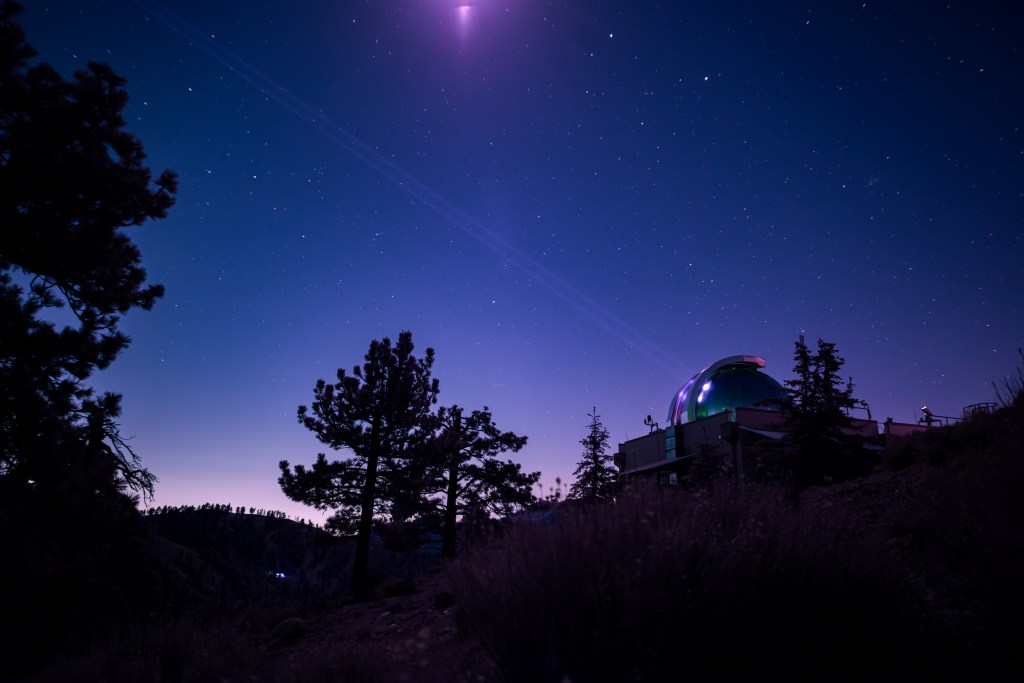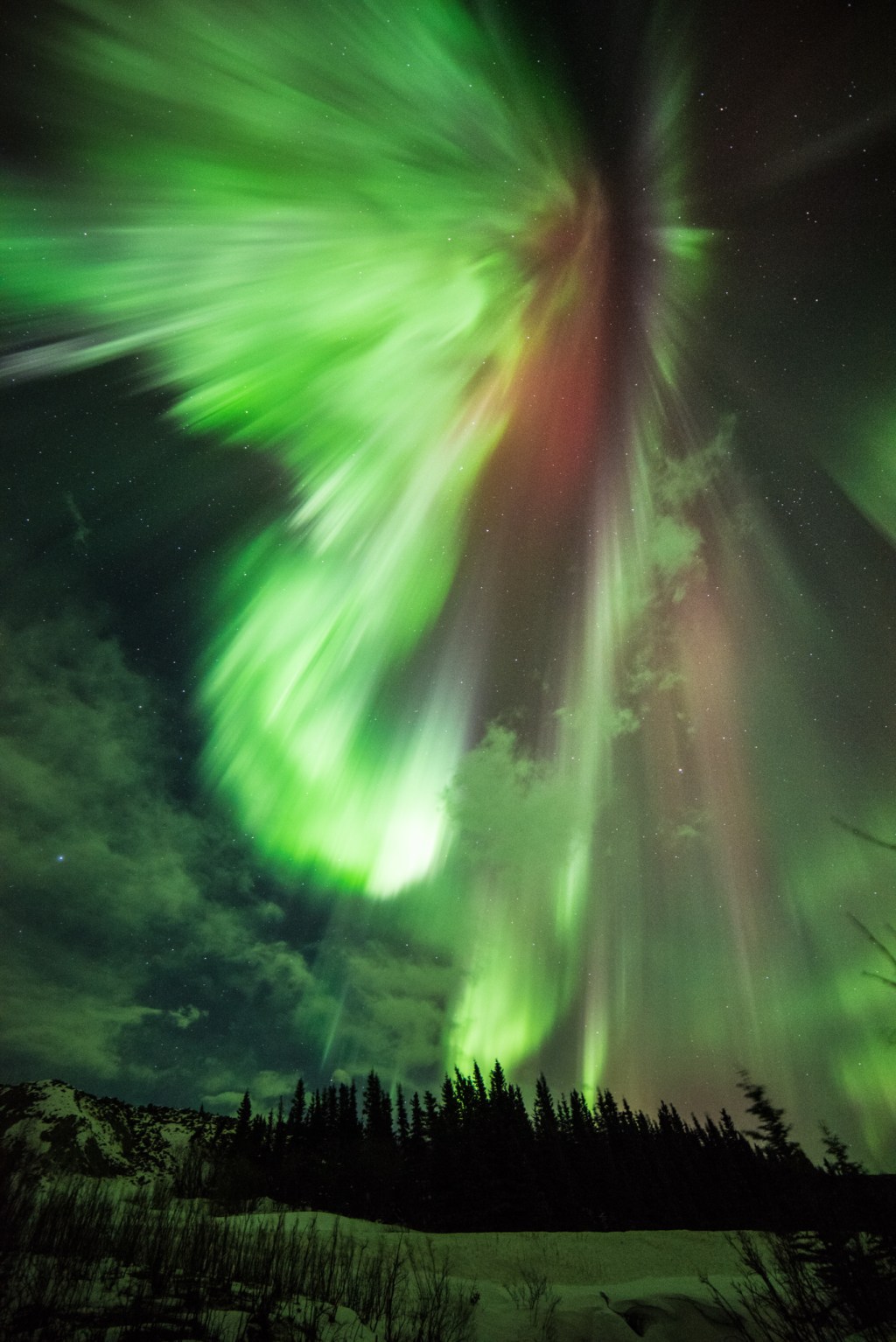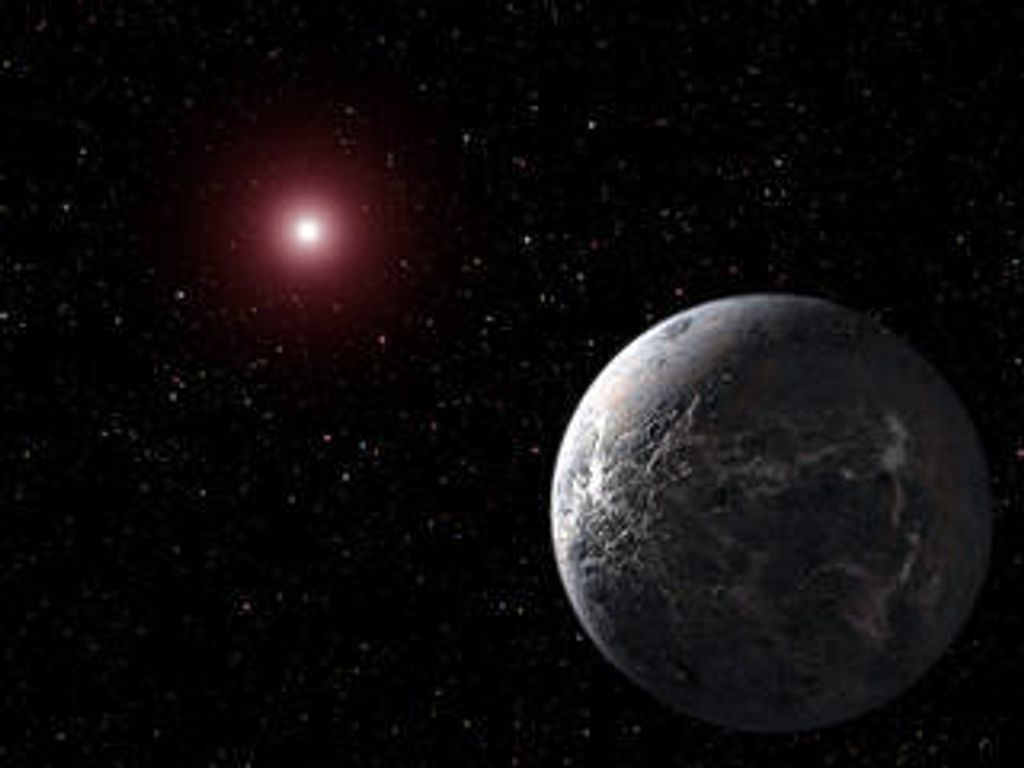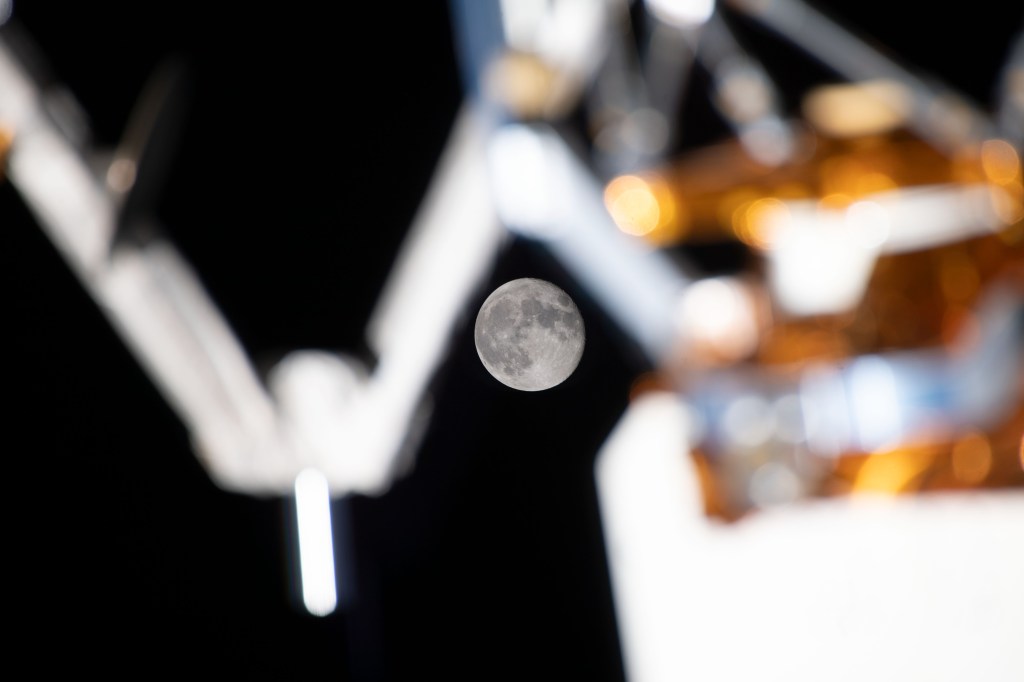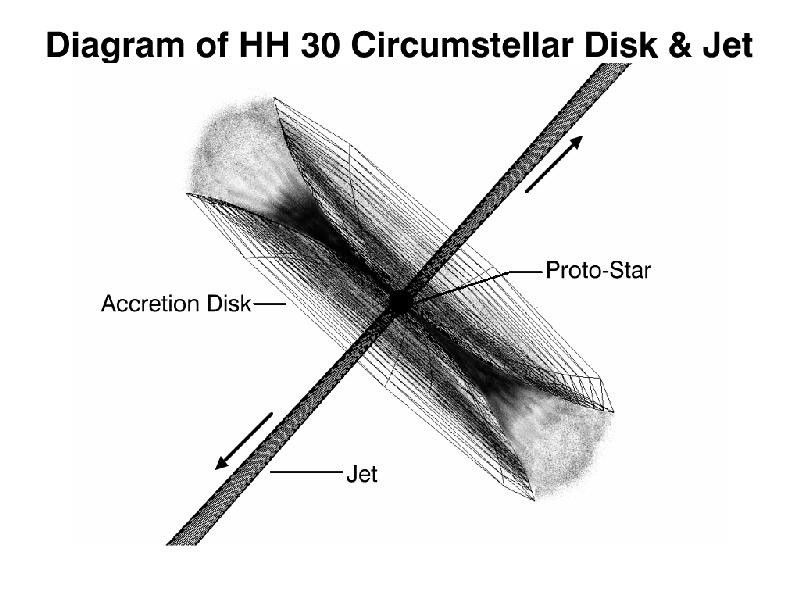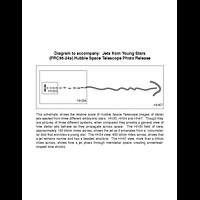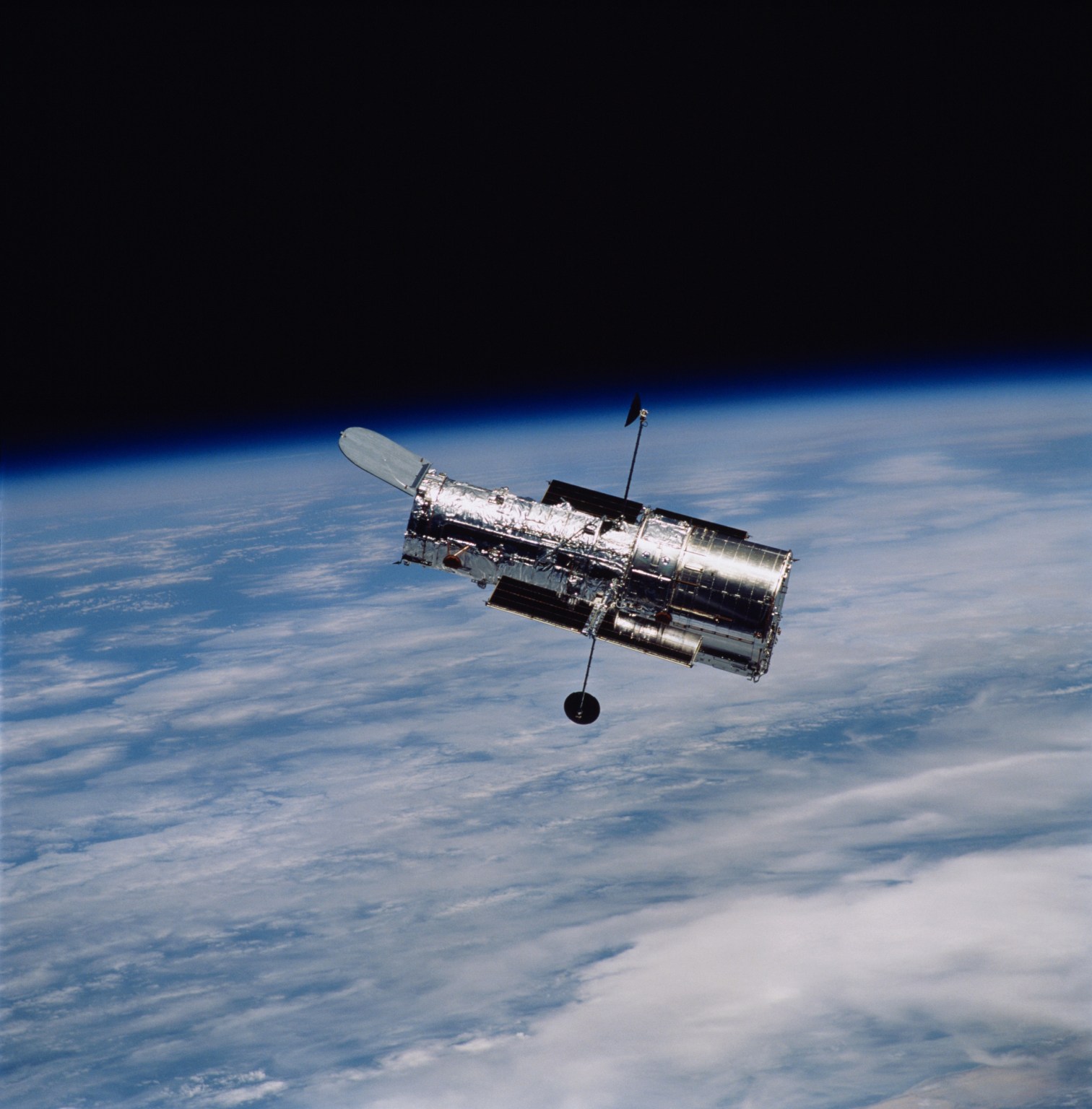1 min read
Wiggling Jet from a Wobbling Star (HH-47)
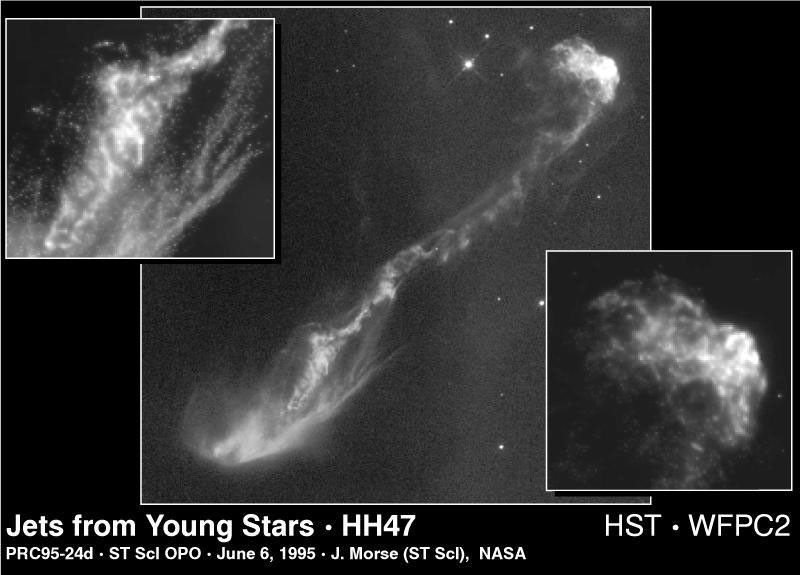
This NASA Hubble Space Telescope image reveals new secrets of star birth as recorded in a spectacular jet of gas the star has ejected.
[center] - Resembling the vertebrae of an imaginary space alien, this one-half light-year long jet of gas has burst out of a dark cloud of gas and dust which hides the newly forming star located in the lower left corner of the image.
[upper left] - An enlargement of a portion of the jet near the star shows the complicated interactions that take place when the ejected gas collides with the interstellar medium. The apparent changes in direction might be produced by wobbling of the star, as it feels the gravitational tug of an unseen companion star or instability mechanisms.
[lower right] - A massive clump of jet material collides with upstream gas and creates a bow-shaped shock wave, like a boat speeding across a lake. Through this process the jet sweeps out a cavity around the star and may thereby restrict how much material is available to fall onto the star as part of the gravitational accretion process.
The images used to make this picture were taken with the Wide Field Planetary Camera 2 on March 26 and 29, 1994. HH-47 lies about 1,500 light-years away in the constellation Vela. The star is forming in a dense gas cloud at the edge of the Gum Nebula.
About the Object
- R.A. PositionR.A. PositionRight ascension – analogous to longitude – is one component of an object's position.08h 25m 44.8s
- Dec. PositionDec. PositionDeclination – analogous to latitude – is one component of an object's position.-51° 3' 27.0"
- Object NameObject NameA name or catalog number that astronomers use to identify an astronomical object.HH-47
- Release DateJune 6, 1995
- Science ReleaseHubble Observes the Fire and Fury of a Stellar Birth
- CreditJ. Morse (STScI), and NASA; Co-investigators: B. Reipurth (European Southern Observ.), S. Heathcote (Cerro Tololo Inter-American Observ.), P. Hartigan (Rice Univ.), J. Bally (Univ. of Colorado), R. Schwartz (Univ. of Missouri), J. Stone (Univ. of Maryland). The insets show portions of the jet that were computer enhanced by A. Boden and D. Redding (JPL) and J. Mo and R. Hanisch (STScI).
Related Images & Videos
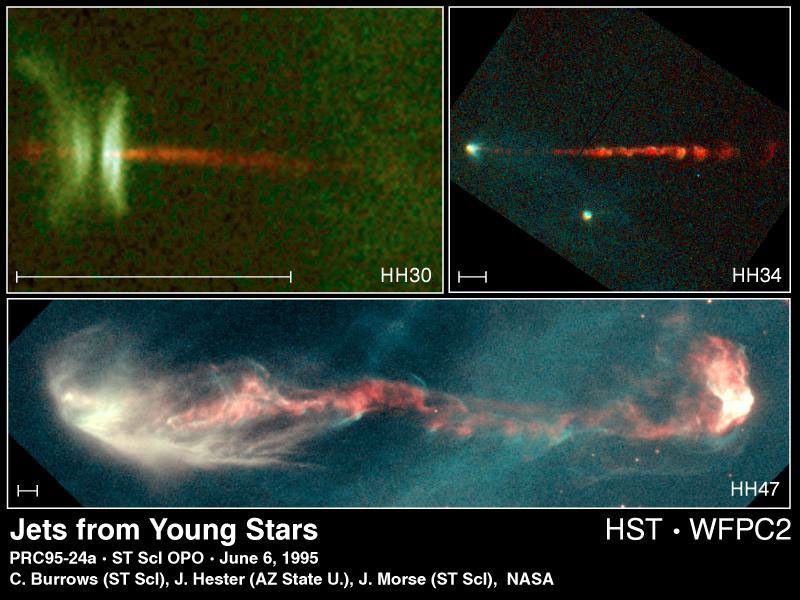
Gaseous Jets From Three Newly Forming Stars
These NASA Hubble Space Telescope views of gaseous jets from three newly forming stars show a new level of detail in the star formation process, and are helping to solve decade-old questions about the secrets of star birth. Jets are a common "exhaust product" of the dynamics of...
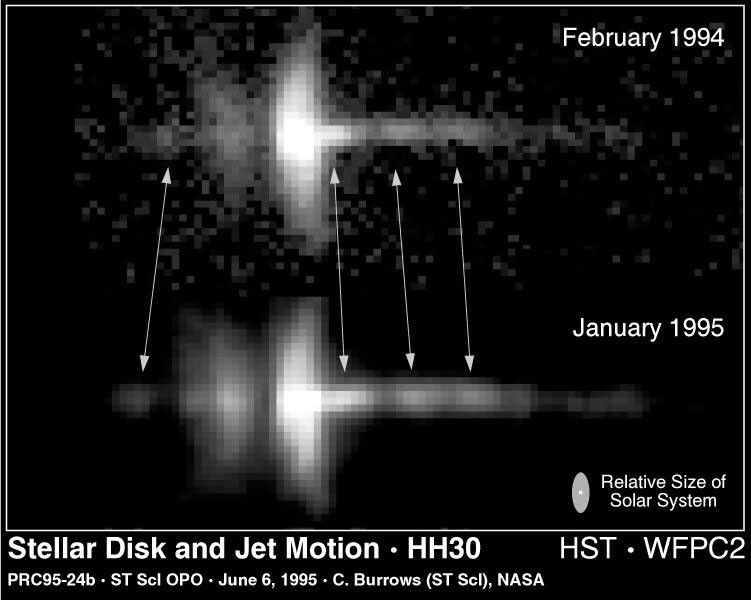
Motion of Jets from an Embryonic Star (HH-30)
This NASA Hubble Space Telescope image reveals unprecedented detail in a newly forming star called HH-30. Exposures taken a year apart show the motion of high speed blobs of gas (arrows) that are being ejected from the star at a half-million miles per hour. The jets emanate from...
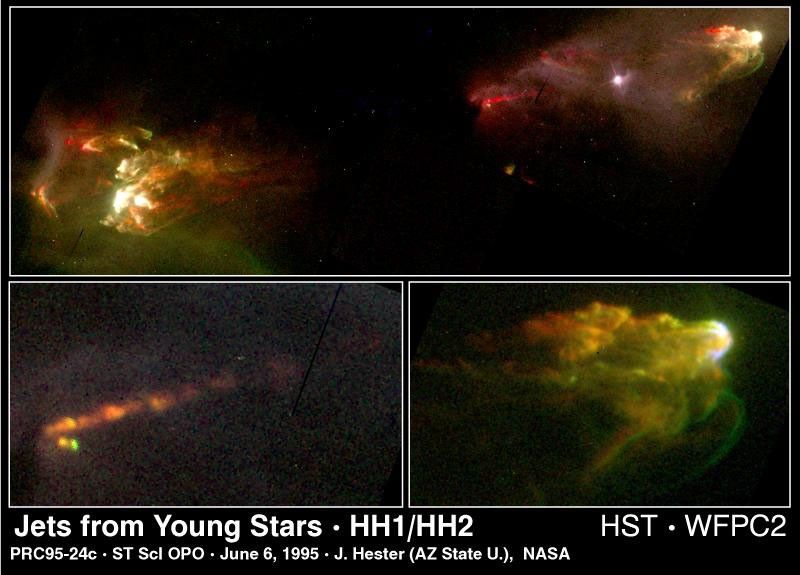
Pair of Jets from a Young Star (HH1/HH2)
This NASA Hubble Space Telescope image reveals new secrets of star birth as revealed in a pair of eerie spectacular jet of gas the star has ejected by a young star. [top] - Tip to tip, this jet spans slightly more than a light-year. The fountainhead of this structure – the young...
Share
Details
Claire Andreoli
NASA’s Goddard Space Flight Center
Greenbelt, Maryland
claire.andreoli@nasa.gov

